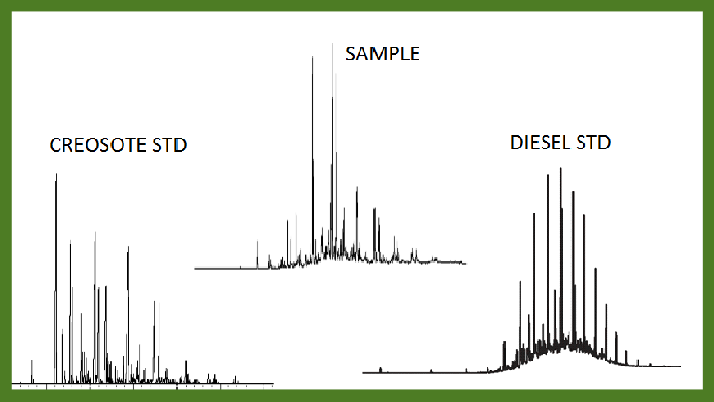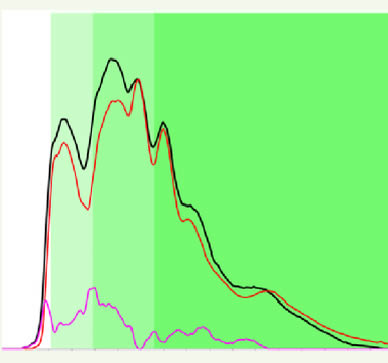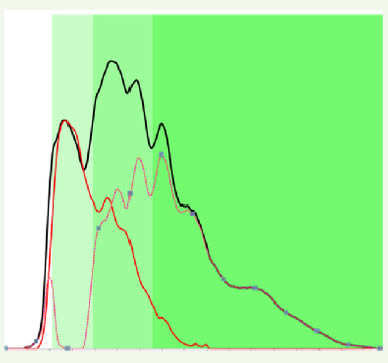
The QED UVF Method in comparison with Gas Chromatography (GC)
The standard laboratory method for oily waste analysis is Gas Chromatography (GC FID,) which only gives accurate quantification if the identity of the hydrocarbon is already known. The GC chromatograms below compare creosote and diesel standards to an unknown sample.
It is difficult to select which standard the unknown sample matches, yet GC is relied on by laboratories to give a definitive hydrocarbon identification. An incorrect identification would mean the results provided would be inaccurate and potentially lead to an incorrect waste classification. The laboratory selected diesel as the closest match in this case.
See below for the correct identification.
The QED fingerprints below are much easier to interpret than the GC results.
The QED fingerprint of the same unknown sample as before (black line) is compared to the QED library fingerprints (red line) of certified creosote and diesel reference standards. It is instantly obvious that the creosote fingerprint is far closer to the sample than that of diesel. Creosote was revealed to be the major hydrocarbon actually present in the sample. The purple line indicates other hydrocarbons in the sample, which the QED also identified.
For users of GC, significant training and experience are required to even tentatively identify the hydrocarbon type. Using the QED, a short training period is enough to enable the operator to easily identify if the hydrocarbon is predominantly fuel oil, diesel, creosote, coal tar, pyrogenic material or lubricating oil, and even give an indication of how weathered the contaminant is. This indication of the proper contminant type means that the most appropriate calibration type can be used to generate the most accurate results. This feature is a significant improvement on standard laboratory practice, which simply uses standard fuel hydrocarbon calibrants (BTEX, DRO and a mineral oil.)



